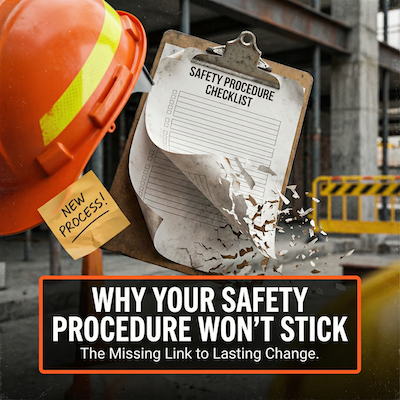Safety signs and their origins
Safety signs are a common sight on construction sites, often conveying important safety and motivational messages. Their roots can be traced back to 19th-century New York, where state law required the labeling of all containers of poisonous substances.

From there, safety signs have evolved and diversified, even becoming an iconic part of Soviet propaganda, promoting teamwork and productivity.

Regulatory and Aspirational Safety Signs
Today, safety signs are often classified into two categories: regulatory and aspirational. Regulatory safety signs, dictated by standards such as AS1319, are legally required and include prohibition signs, mandatory action signs, limitation signs, danger signs, warning signs, emergency information signs, and fire signs.

Aspirational safety signs, on the other hand, are intended to inspire and remind workers to prioritize safety.
The 1990s was famous for its inspirational poster design;

Then parodies of those very same posters are even more famous.

It's easy to see why there is a pull towards creating signs to solve our problems. After all, we want to make sure that people do the right thing, and consistent reminders must help, right?
Well, yes and no.

The limitations of safety signs
Although safety signs are an essential component of construction safety, they are not a comprehensive solution. Over-reliance on signs can contribute to a cynical environment, particularly when there is a disconnect between the messages conveyed by signs and the actions of management.
For example, a sign reading "SAFETY FIRST" may be undermined if management places excessive time pressure on workers, encouraging them to take safety shortcuts. In such cases, aspirational safety signs can be counterproductive, breeding skepticism and undermining their intended purpose.
Creating a Holistic Safety Culture in Construction
To establish a truly safe construction culture, it is crucial to move beyond safety signs and adopt a holistic approach that combines various safety initiatives.
Match words with actions
Aspirational signs should be part of a larger safety strategy that aligns words with actions. For instance, consider using aspirational signs to promote a safety reward program, where safe work is recognized and rewarded. By pairing the sign with a tangible reward system, you demonstrate that on-site safety is genuinely valued and encouraged.
For an example involving Scratchie, you could have aspirational signs promoting the fact that safe work is rewarded on this site, with a QR code that allows a worker to download the app and register. The sign is the "words", and the Scratchie app is the "actions".

When a worker sees the signs promoting safety, and is rewarded for behaving safely, the example is set: "on this site, our words match our behaviours".
Invest in training, but not just training
A comprehensive safety culture requires ongoing training and education to ensure that all workers are aware of the latest safety standards, procedures, and best practices. This includes providing regular refresher courses, toolbox talks, and skills assessments to keep safety at the forefront of everyone's minds. But understand that training is only part of the solution.
Embrace technology
Advancements in technology provide new opportunities for improving construction safety. For example, as this blog post describes, wearable devices can monitor worker fatigue and ergonomic strain, while augmented reality can be used for training purposes or to visualize potential hazards in real-time. By integrating technology into your safety strategy, you demonstrate a commitment to innovation and continuous improvement.
Promote open communication
A strong safety culture thrives on open communication between workers and management. Encourage workers to report hazards, incidents, and near misses without fear of retribution, and create a system that allows for anonymous reporting if necessary. Regularly solicit feedback from workers on safety concerns and be responsive to their input.
How do I get Scratchie on my site?
Getting Scratchie on your site can take less than a day. Here is a blog post that outlines the steps required to start rewarding safety on your site.
You can also email hello@scratchie.com to start a conversation for your site, whether you're the project manager, administrator or just a worker who thinks Scratchie might work well on your site (if you're that worker, we are happy to keep all leads confidential).
Conclusion
Safety signs play a vital role in the construction industry, but they are only one piece of the puzzle. To create a truly safe construction culture, it is essential to adopt a holistic approach that combines various safety initiatives, including matching words with actions, investing in training and education, embracing technology, and promoting open communication. By doing so, you demonstrate your commitment to the well-being of your workers and the success of your projects.










.svg)
